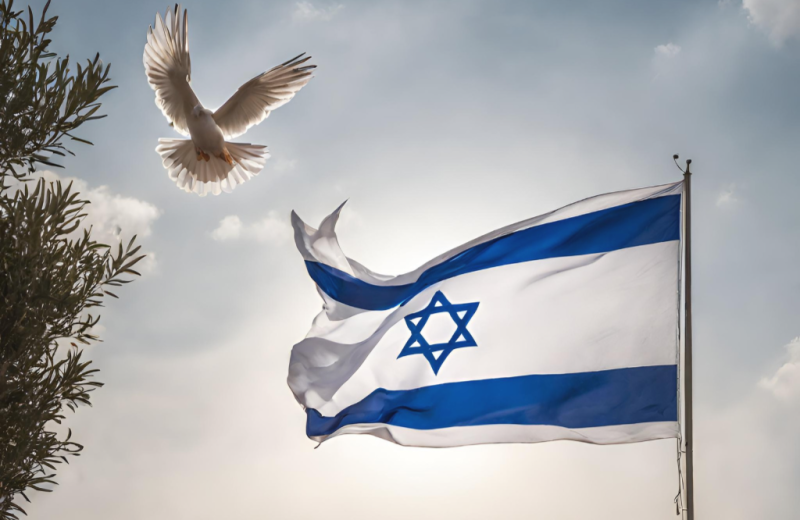
If I had to pick one photo epitomizing Israel’s victory over Hamas, it would not be from the Gaza battlefield. It would show delegates to the Be’eri Summit convened in order to design a regional-international master project, a kind of Middle Eastern Marshall Plan for the large-scale development of the Gaza Strip, the West Bank, and Israel’s Gaza border communities.
The participants – from the normalization states, Saudi Arabia, the Palestinian Authority, the United States and the European Union – would meet at the rehabilitated Kibbutz of Be’eri, a symbol of revival from the unspeakable Hamas atrocities of Oct. 7, 2023. The summit would also kick off a negotiation process with the Palestinian Authority in order to achieve what Hamas, Iran and its proxies sought to prevent: normalization between Israel and the Arab world, renewal of the political process with moderate Palestinianswilling to live alongside Israel, and the establishment of a broad US-backed regional front against Iran.
The current discussions by decision makers, pundits, and self-appointed experts about the objectives of the war have thus far focused mainly on its military outcomes, on the minute Israel silence its guns. They have not dealt with the aftermath. Assassinating senior Hamas figures, destroying the organization’s vast tunnel network and other important operational targets all refer to exhausting a bank of targets, inflicting kinetic damage on Hamas instead of enhancing Israel’s strategic standing. When Israeli officials and top brass are asked about the day after, they mumble some inanity about civil-local control of the enclave, but decline to elaborate. And for good reason – it’s simply not their area of responsibility (or expertise).
The Israeli public has come to expect every war or military operation to culminate in the ultimate depiction of Israel’s victory (such as the historic photo of Israeli paratroopers arriving at the Western Wall in 1967), a visual representation responding to a deep-rooted psychological need for affirmation that personal and collective security have been achieved. That need is an uncompromising imperative in this war, which undermined Israelis’ sense of security at its most fundamental level. Yet we tend to forget that asymmetrical warfare against terrorist organizations rarely affords absolute decisiveness. When a weaker enemy can claim victory simply by its ability to remain standing once the fighting ends, a visual portrayal of victory is elusive.
Israel’s best chance of illustrating its victory therefore lies mainly in the political-strategic field, in defeating the idea that the enemy sought to snatch from its hands, advancing along the routes it tried to block, and providing Israelis with real security for the longest possible term. A look at Israel’s partial past victories demonstrates that the images of victory were never taken on the battlefield. During the second intifada (2000-2005), for example, it was the amnesty agreement that allowed thousands of wanted Tanzim activists to become toy dealers in the Nablus market that was considered the final chord of the uprising. During the Second Lebanon War (2006), it was the filled–to–capacity Israeli guest houses along the Lebanon border that testified to Israel’s victory.
The depiction of Israel’s victory in the current campaign should reflect a changed political reality, a game-changing strategic effect. As such, it cannot be limited to Gaza. It mustaffect regional and global circles. It must deal with the optimal conditions for shaping the day after based on two main parameters: ensuring Israelis’ security and blocking Iran and its so-called axis of resistance. A political decision at the present time should aspire to establish an Israeli-regional political-security alliance based on two pillars: a renewed political process with the Palestinians defining the future Israeli relationship with the successors of Mahmoud Abbas, and security agreements between the United States and the countries of the region. For this ambitious vision to be realized, work must be carried out simultaneously on three levels – global, regional and Israeli-Palestinian, with each level based on the other.
Resolving the conflict with the Palestinians is necessary in order to mount an effective struggle against Iran. The events of Oct. 7 shattered the illusion that Israel’s integration in the region, or regional stability vis-à-vis the Iranian proxies, could be accomplished without resolving the Palestinian issue. The ability of a relatively small terrorist organization such as Hamas to set off a large-scale regional confrontation makes it abundantly clear that an effective struggle against Iran is only possible by neutralizing its influence in the Palestinian arena. This is a key condition for building defense alliances with the countries of the region, for ensuring the support of the Western world, and above all for defending the residents of Israel.
The need for a diplomatic settlement of the Israeli-Palestinian conflict in order to fight Iran exposes the main obstacle to victory. The challenge lies not only in the Hamas tunnel system, its vicious captivity of hundreds of Israeli civilians, or the threat of Hezbollah’s intervention. It stems first and foremost from the current Israeli government’s inability to advance even the slightest progress vis-à-vis the Palestinians. Most Israelis want to bring down the government, justifiably so, because of its failure to govern and the societal divisions it sowedin the past. But the most egregious damage by the hard right government in the current campaign stems from the impasse to which it is leading. More than ever, this is the wrong government at the wrong time. Conducting a war without offering any reward on the strategic level is like waging a campaign with two hands and one leg tied. This government, which failed to consider even symbolic concessions vis-à-vis the Palestinians to promote normalization with Saudi Arabia, which preferred to bribe Hamas so as to avoid renewing the political process with the Palestinians, and whose messianic extremists are setting the West Bank on fire these very days, is the most fundamental obstacle to a real Israeli victory.
The article was published in German in the Frankfurter Allgemeine Zeitung on November 20th and in Hebrew in N12 on November 11th.


